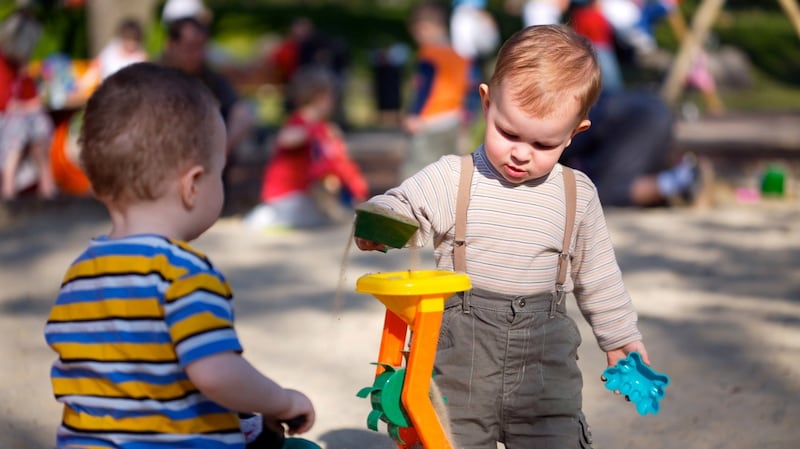The latest Irish employment figures show a remarkable acceleration in jobs growth in the first three months of the year .
The total number of people at work rose by a record 35,200 compared to the final quarter of 2018 and by 81,200 since the same time last year, with the unemployment rate slipping below 5 per cent and now at its lowest level since 2006. So are we now at full employment? Or can this remarkable jobs rise just keep going?
1. What the figures tell us?
Most forecasters had expected recruitment to remain positive this year, but the rate of jobs growth to slow. But having stuttered for a while , the rise in total employment picked up again towards the end of last year and has surged in early 2019, with gains across most sectors and every region of the country over the past year.
A lot of the jobs gains have been in Dublin and the mid-east region, where total employment rose by 44,000 over the past year, with a particularly strong rise in Kildare,Meath and Wicklow, the " mid-east" commuter counties.
Increased participation of women in the workforce remains a notable trend, reversing the fall off during the crash.
But there were gains across the board, albeit at different rates of growth. There was for example a 3.2 per cent rise in job numbers in the Border regions over the past year and a slower 1.8 per cent rise in the mid-west. The south-east (6.7 per cent) and the midlands (6.2 per cent) are the only regions where the unemployment rate exceeds 6 per cent.
In terms of sectors, it is a similar picture, with increases in 12 of 14 sectors and agriculture the notable weak point, continuing a long downward trend, with an annual drop close to 10,000 jobs. Self-employment also fell, possibly due to more people being tempted into paid employment.
The overall picture is a strong acceleration in jobs growth, with no sign of Brexit uncertainty slowing hiring with both the public and private sector recruiting strongly.
While part-time employment was the first to rise in the immediate wake of the crash, recent years have seen a strong rise in full-time jobs .Almost 63,000 of the jobs rise in the past year was in full-time employment and there was a fall in the number of part-time employees who would prefer to work full -time.
A notable factor was that female employment rose by 5 per cent,whereas male employment rose by 2.5 per cent.
So increased participation of women in the workforce remains a notable trend, reversing the fall off during the crash.
2. What is the outlook ?
Total employment is one of the most important and timely indicators we get of the health of the economy. Unlike many Irish statistics it is not affected by the accounting practices of big multinationals. It is a net figure – made up of gains minus losses .
Most analysts had anticipated a more moderate level of jobs growth – and some slowdown in overall economic growth – this year. Davy Stockbrokers, in a note to clients said that most projections had built in a slowdown in jobs growth this year to the 2 to 2.5 per cent range, but with a 3.7 per cent year-on-year rise in the first quarter “ these assumptions now look too pessimistic.”

Forecasts for overall economic growth have also been revised down recently, due to Brexit and other international factors. Davy says that the jobs figures “make us more comfortable with our forecast of 5 per cent GDP growth this year, above official forecasts of around 4 per cent growth.”
According to Dermot O’Leary of Goodbody Stockbrokers: “External risks aside, with employment rising in most sectors, the Irish labour market, and thus the prospects for domestic demand, remains in rude good health.” Brexit, to date, “ is doing little to affect hiring plans,” he said.
There are still problems and legacies of the crash. Long-term unemployment has fallen sharply, but still stands at 40,90, still more than 7,000 above its 2007 low. Ireland still has a high proportion of jobless households. and youth unemployment remains higher at 10.9 per cent, albeit that it has fallen sharply from 12.5 per cent one year earlier.
But with the unemployment rate now down to 5 per cent on average in the first quarter – and an estimated 4.6 per cent in April – is it possible that jobs growth can continue at its current level? There is always some level of unemployment, with people changing jobs and some not having the skills to get available work.
3. Are we at full employment?
The answer to this depends on both the ongoing demand for jobs and also the supply – the size of the labour force, which is the total population available for work.

The unemployment rate falling below 5 per cent would often be judged as coming close to full employment. However there are two additional factors to consider in the Irish case. One is that the participation rate in the jobs market and the actual rate of employment are still below many other developed economies – and lower than at the peak of the boom.
For example the data shows the actual employment rate here at 69.1 per cent, compared to over 75 per cent in the UK. And we have also traditionally attracted migrants when the jobs market is strong – and are now doing so again. So there are potential sources of additional labour supply.
However the Irish labour market is clearly already “hot” and in many areas supply is well ahead of demand. According to Dermot O’Leary of Goodbody: “ There is already visible evidence of rising wage pressures and significant skill shortages.
In my view this reflects an economy which is now at full employment. Given the momentum seen in the quarter one figures, this wage pressure is likely to intensify from here.”
With female participation lower than male, ESRI research has indicated that better childcare facilities and supports could increase the number of dual-working couples.
O’Leary points out that while labour force participation has fallen from 66.2 per cent of the population in 2007 to 62 per cent now, the drop is entirely due to a decline in the 15 to 24 year old age group, due in part to more people staying in education, particularly males. Lower employment in construction – a traditional jobs provider for younger males – is also a factor.
With female participation lower than male, ESRI research has indicated that better childcare facilities and supports could increase the number of dual-working couples. However any increase due to such policy measures is likely to be slow and Central Bank research has pointed to the impact of population trends and longer periods of education as likely to offset any positive impact from this on overall participation.
“While participation rates are lower in Ireland than in many of our peers, this was also the case in the 2000s, suggesting that this is a structural issue rather than a cyclical one,” according to O’Leary.
Immigration was a more likely source of additional labour, the Central Bank 2017 research said. And this has proved correct with immigration driving the 36,000 increase in the labour force in the first quarter. This is likely to continue. But the housing and rental shortage is clearly an issue here. And O’Leary points out that, unlike the early 2000s, unemployment is now low in many Eastern European countries , which were then the primary source of an influx of labour.
4. What are the things to watch?
The growth rate of jobs will be closely watched as a key indicator of overall economic momentum through 2019. The impact of Brexit remains a big unknown, with this likely to run into the Autumn. As well as posing a threat, it is also having some positive impact on jobs in the financial sector due to relocations from London and possibly also on FDI more generally. But a hard Brexit could cost significant job losses elsewhere.
A key question is whether the pace of jobs growth can be sustained. Employers are now shouting loudly about skills shortages, pressure on wages and the impact the housing crisis is having on attracting and keeping staff. In terms of wages, the next earnings data is due next week will be an important indicator.
After a period of very sluggish growth after the crash, earnings growth started to slowly pick up over the past year and a half and annual growth topped 4 per cent in the final quarter of last year.
Further acceleration would underline the scale of pressures emerging in the jobs market and may hit competitiveness in some sectors. The interesting point from the first quarter figures is that despite the wage and housing issues, hiring continued as such a rapid level. The question is whether this can continue?
Smart Money is a weekly online only column looking at the main economic issues and how they affect you.






